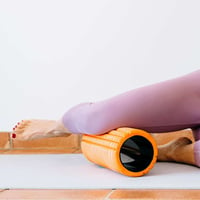Groin pain can catch you off guard—whether it starts suddenly after a workout or builds gradually...
Get Rid Of Hip Pain: A Complete Guide

Hip pain is a common ailment that affects millions of people worldwide, impacting daily life and overall well-being. While medication can provide temporary relief, there are numerous effective ways to manage and alleviate hip pain without relying on pills. In this comprehensive guide, we'll explore the types of hip pain, their causes, and natural strategies for relief, including specific strengthening exercises and the benefits of physical therapy.
Understanding Hip Pain
Hip pain can range from a dull, constant ache to a sudden, sharp sensation. It can be categorized into two main types:
- Acute hip pain: Lasts for a few days to a few weeks
- Chronic hip pain: Persists for 12 weeks or longer
Common causes of hip pain include:
- Osteoarthritis
- Bursitis
- Tendinitis
- Muscle strain
- Labral tears
- Femoroacetabular impingement (FAI)
When the Arthritis Foundation discusses hip pain management, they emphasize non-drug approaches as the first line of treatment. This approach highlights the importance of exploring natural strategies for hip pain relief.
Natural Strategies for Hip Pain Relief
Johns Hopkins Medicine suggests that pain relief doesn't always require medication. Here are some effective natural strategies:
1. RICE Method
For acute injuries or flare-ups, the RICE method can be effective:
- Rest: Avoid activities that aggravate the pain
- Ice: Apply cold packs to reduce inflammation
- Compression: Use a compression bandage to minimize swelling
- Elevation: Keep the leg raised to encourage circulation and reduce swelling
2. Exercise Regularly
Regular exercise can strengthen the muscles around your hip, providing better support and stability. Some effective activities include:
- Swimming: A low-impact activity that's gentle on the joints
- Cycling: Improves hip flexibility and strength
- Yoga: Enhances flexibility and core strength
3. Apply Heat or Cold Therapy
Alternating between heat and cold can provide significant relief:
- Heat therapy: Increases blood flow and relaxes muscles
- Cold therapy: Reduces inflammation and numbs pain
4. Practice Mindfulness and Relaxation Techniques
Stress can exacerbate hip pain. Try these relaxation methods:
- Deep breathing exercises
- Progressive muscle relaxation
- Meditation
Proven Strengthening Exercises for Hip Pain Relief
According to Cleveland Clinic, incorporating targeted exercises into your routine can significantly reduce hip pain by strengthening the muscles around the hip. Here are some effective exercises:
1. Hip Flexor Stretch
This stretch targets the muscles at the front of your hip:
- Kneel on one knee with the other foot in front
- Lean forward, keeping your back straight
- Hold for 30 seconds, then switch sides
2. Bridge
This exercise strengthens your glutes and core:
- Lie on your back with knees bent and feet flat on the floor
- Lift your hips towards the ceiling
- Hold for 5 seconds, then lower slowly
- Repeat 10-15 times
3. Clamshell
This exercise targets your hip abductors:
- Lie on your side with knees bent
- Keep feet together and raise the top knee
- Hold for 5 seconds, then lower
- Repeat 10-15 times on each side
4. Standing Hip Abduction
This exercise strengthens the muscles on the side of your hip:
- Stand holding onto a chair for balance
- Lift your leg out to the side
- Hold for 5 seconds, then lower
- Repeat 10-15 times on each side
5. Hip Extension
This exercise targets your glutes and hamstrings:
- Stand holding onto a chair
- Extend one leg behind you, keeping it straight
- Hold for 5 seconds, then return to start
- Repeat 10-15 times on each side
The Role of Physical Therapy in Hip Pain Management
While self-care strategies and exercises are essential, professional guidance can be invaluable in managing hip pain effectively. Physical therapists are experts in movement and can provide personalized treatment plans to address your specific needs.As WebMD explains, physical therapy can be an effective treatment for a range of hip conditions. Here are some benefits of physical therapy for hip pain:
- Personalized Care: Physical therapists assess your condition and create tailored treatment plans.
- Pain Reduction: Through various techniques, physical therapy can significantly decrease pain levels.
- Improved Mobility: Therapists work on restoring your range of motion and flexibility.
- Strengthening Exercises: You'll learn exercises to strengthen the muscles around your hip, promoting long-term relief.
- Gait Analysis: Physical therapists can identify and correct walking patterns that may be contributing to your pain.
- Prevention Strategies: Learn techniques to prevent future hip pain episodes.
How MotionSync Can Help
At MotionSync, we understand the impact that hip pain can have on your daily life. Our platform connects you with experienced physical therapists in your area who specialize in hip pain management. By using MotionSync, you can:
- Easily find and book appointments with qualified physical therapists
- Access personalized treatment plans
- Track your progress and recovery
- Receive ongoing support and guidance
By incorporating these proven strengthening exercises, natural strategies, and professional guidance into your routine, you can take significant steps towards managing and relieving hip pain without relying on medication. However, always consult with a healthcare professional before starting any new exercise regimen or treatment.
Don't let hip pain control your life. Take the first step towards pain-free movement by exploring natural relief strategies and connecting with a physical therapist through MotionSync. Remember, while these strategies and exercises can be effective, it's essential to consult with a healthcare professional if you experience severe or persistent hip pain. Your journey to pain-free hips starts here – let MotionSync guide you every step of the way.




